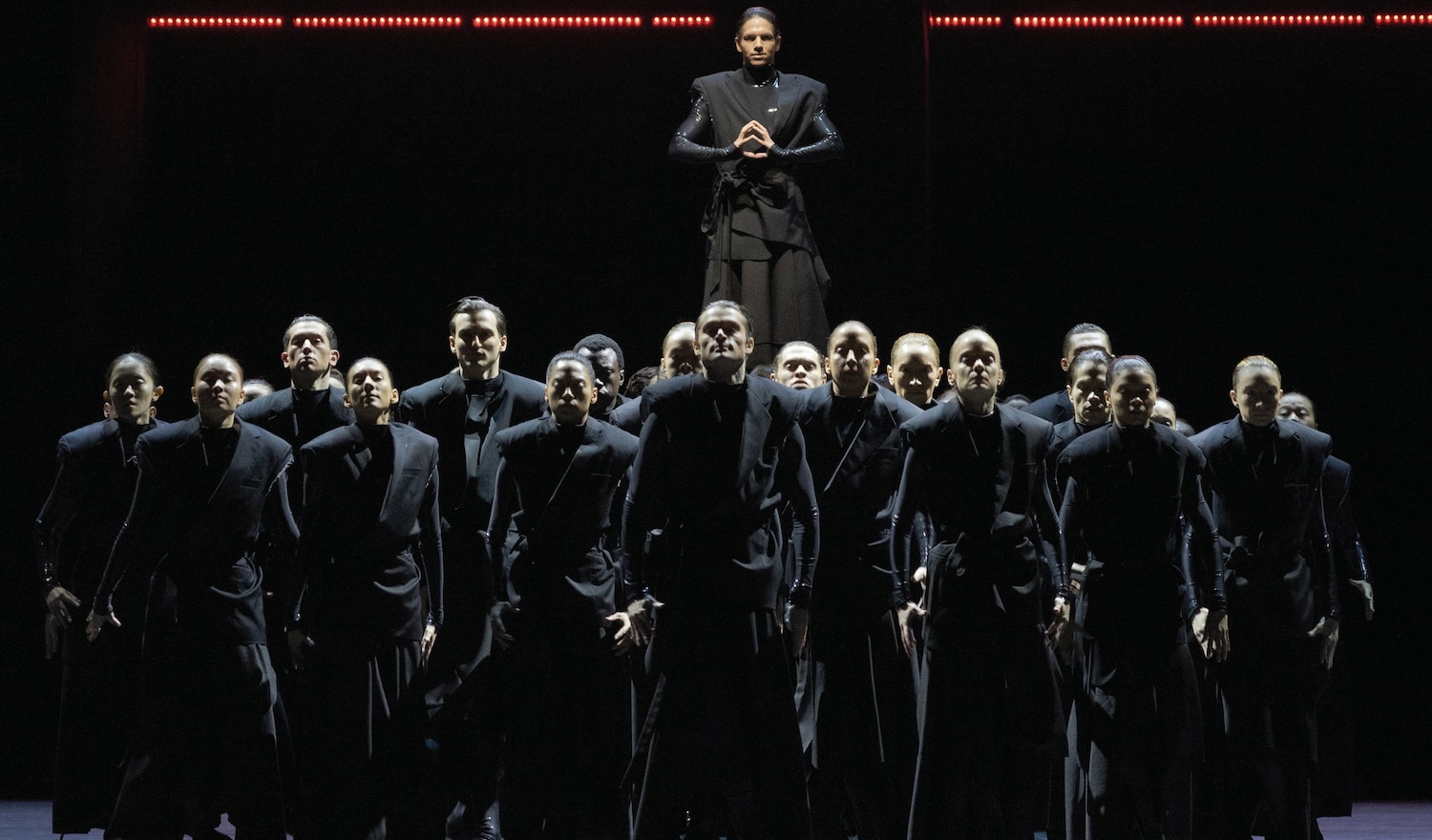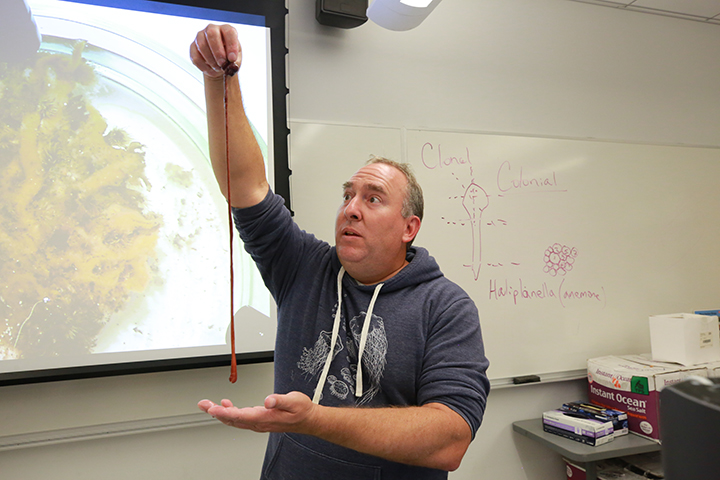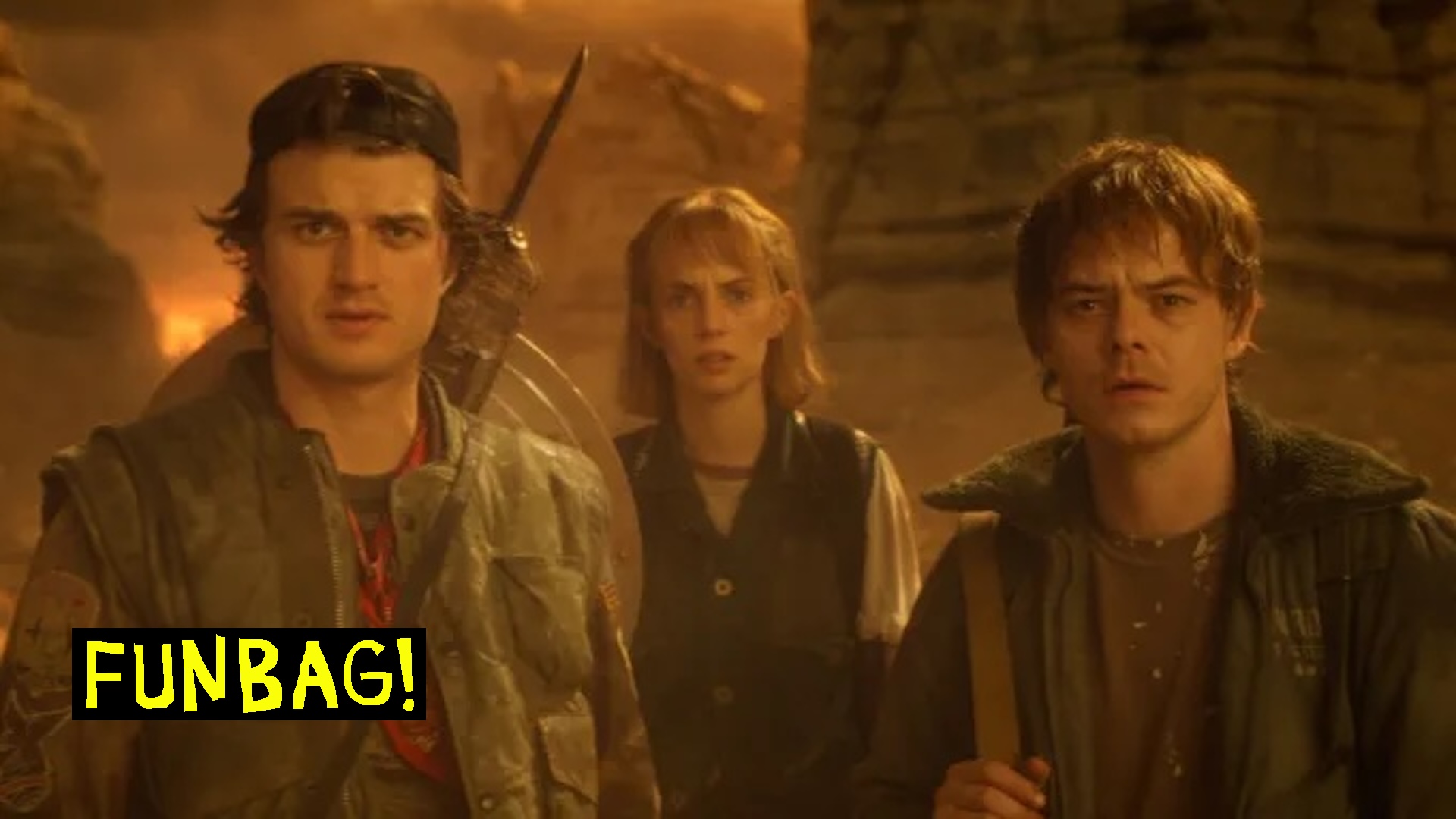Mere Mortals begins with a lone dancer on stage: San Francisco Ballet's principal dancer Wei Wang arcing out a sprightly little solo as the Greek god Hope. Though Wang is spurred on by a tense, zero-on-the-floor synth line, surrounded by fog, and backlit with a row of red lights evoking the unblinking eyes of so many cameras, his movements are fluid, almost gelatinous. Wang gets avian with it, defiantly so. Just as I began to wonder about the discord between his dancing and his surroundings, the beat drops and 40-odd dancers clad in black capes and cloaks skitter in and pulsate to what sounds like a Floating Points song, because, well, it is a Floating Points song.
Mere Mortals astounded me. The production is the SF Ballet's first under newly appointed Artistic Director Tamara Rojo, in collaboration with choreographer Aszure Barton and composer Sam Shepherd—the aforementioned Mr. Points, the highly regarded electronic musician who is responsible for coming up with the idea of adapting the myth of Pandora into a modern parable about artificial intelligence. Rojo clearly set out to mark the start of her tenure with a singular work, as Mere Mortals is unlike any ballet the company has put on (per dance writers who can speak with authority on the matter), and, to me, unlike any work of the performing arts I've ever experienced. It's a dense, 75-minute one-acter that demands your focus and holds it, Greek tragedy as ketamine bender. They just concluded their run at the War Memorial Opera House last week, though demand was so overwhelming and the reception so rapturous that they announced another run of shows in April.
Shepherd's score confidently holds taut throughout the work, quite the feat considering how it meanders between quiet and loud, abrading the audience with strobed-out chunks of sound that made it impossible not to squirm a little in my seat between languid harp solos and violins. His involvement in the project was what caught my attention. In 2021, Shepherd collaborated with Pharoah Sanders and the London Symphony Orchestra to produce Promises, a 46-minute experimental jazz record that, through the hundredfold reinvocation of its seven-note motif, sounds like a Philip Glass soundtrack to a Zelda game. I loved that record, though not enough to keep from making a clown of myself by missing the one time it would ever be performed live with a full orchestral backing.
If Shepherd were to release the Mere Mortals score as a standalone work, as legions of Instagram commenters beg for for every day, it would hold up. There's a sense of unease knitting the contemplative sections to the more straightforward computer-music pieces, which often back the bits where the ensemble is uncannily shuffling and jerking around the stage. I'm using "computer music" obliquely, as he's augmenting the orchestra mostly with analog synths. As with Promises, Shepherd will build to what feels like a crescendo, only for the beat to deform churn onward, meandering ever so slightly in a more complex direction. There's great attention paid to the texture of sound, in a way it's hard not to be a little synesthetic about; different pieces feel fuzzy, or raspy, or ice cube–cold.
Late in the ballet, with a distraught Pandora rueing (Spoiler, I guess? Maybe you thought the box was a nice thing full of cool stuff?) the opening of the jar (it was later mistranslated as box), Shepherd uses something called a Therevox, modulating the wave of sound in time with a throbbing, vertical band of light. The most jawdropping innovation is what he does during Pandora's big solo number, which he details below: A handful of orchestra members cloister themselves in a nearby cavern and play in time with the conductor, creating a signal that is then fed to the percussion section so they can control it and play it out via the drums, all with Shepherd manning a 60-year-old Buchla synthesizer that controls the decay of the noise. I think if Prometheus could see this, he'd agree that his sacrifice was all worth it.
I'm no seasoned dance critic, though I don't think the bar to appreciate Barton's work is higher than "has a body." The ensemble moves with menace when Prometheus is in there doing his thing, flailing and nodding, marching with purpose, mashing themselves together into an Inside-esque ball to forge Pandora. I had the fortune (I think?) of not reading anything about the show before going in, and I read the ensemble as androids, mostly from the way they moved in time with each other in inhuman patterns. The four solo performers are all distinct in their movements: Hope, flitting and carefree; Prometheus, defiant and direct; Epimetheus, soul-crushingly horny, down so bad he may as well have been embedded in the Earth's mantle.
But no body on stage moved like Jennifer Stahl as Pandora. After being forged by the gods, she introduces herself by apparently unlocking each vertebrae from its neighbor and slinking around the stage in an impossible-looking way, like she was glitching. Stahl had to perform as someone new to a human body, then play off of the thermonuclear horniness of Epimetheus in their pas de deux, then, most challenging of all, recapitulate it all but with a deep, aching regret after she opens the jar. It's Stahl's multiflorous movement that makes for the most affecting part of the show, as she stands perfectly still, staring dead into a huge screen as it plays minutes of rapid, terrifying videos of clouds multiplying and screaming out over the Earth, the jar opened and its woes unleashed.
Though the project used only human labor, I think the baleful montage is coded to come off as AI art, or at least situate itself in the same uncanny valley. The stuff in the jar is meant to menace, a goal it accomplishes in form and substance. The easy takeaway is right there, and Mere Mortals does not shy away from suggesting it: artificial intelligence is a Pandora's Jar–like force that we are unleashing despite our inability to stuff it back in; it could ruin us all. The ballet achieves escape velocity from this zeroth-order take, however, by undercutting the montage with a kind of happy ending. The only guy left in the jar after Pandora yeeted it was Hope, whom we see bookending the play, first in black, finally in gold, surrounded by an ensemble who's traded menace for robotic placidity. The brilliance of the ending, to me, is that it suggests redemption so directly, but in an inarguably altered state. All of this could be better, it suggests, but it will be different.
The montage evoked climate change, the ballet evoked the infamous cavalcade of tech billboards spangling the freeway on the SF side of the Bay Bridge, but the work had me thinking about San Francisco as an organism. Not to be Rebecca Solnit over here but the city has changed in the past 20 years with an unhinged rapidity that I think you can only fully appreciate with a certain amount of perspective, one that could lend itself to a strange sense of optimism. There I was, engulfed by the well-heeled of San Francisco—later that night I'd sit at dinner next a table full of obnoxious Nob Hill residents, one of whom would casually remark that "No self-respecting person would live in Oakland, my God"—those who presumably had made their fortunes in the digital gold rush thinking about the limits of what they could change.
San Francisco is so susceptible to sudden, malignant transformations because it is essentially an island. The East Bay, the Peninsula, and Marin County are right there but cut off by water or mountains, meaning any squeezing done on the residents or architecture or economic topography of San Francisco by the tech industry doesn't leech out evenly or in any directed manner; instead, it warps. And as a longtime San Francisco resident, lifelong superfan, and current alleged self-disrespecter, I've been feeling a sense of renewed admiration for the city for a while now, because most of it has been more resistant than the apocalypticism would make you think. There is still a soul in San Francisco that will never die, no matter how many Cruises try to kill it.
Dance is a more subjective form than the written word or video games or cave painting, especially to the unversed, so I'm hesitant to interpret past a certain point. Mere Mortals works if you want to dissect it, though it also works as a purely sensory experience, one I was thrilled to be struck over the head by. I didn't expect to leave so optimistic, and if you go, I don't know if you'll share my feelings. What I can guarantee is that it will unsettle you, which is all you can ask of art or expect of Pandora's jar.






